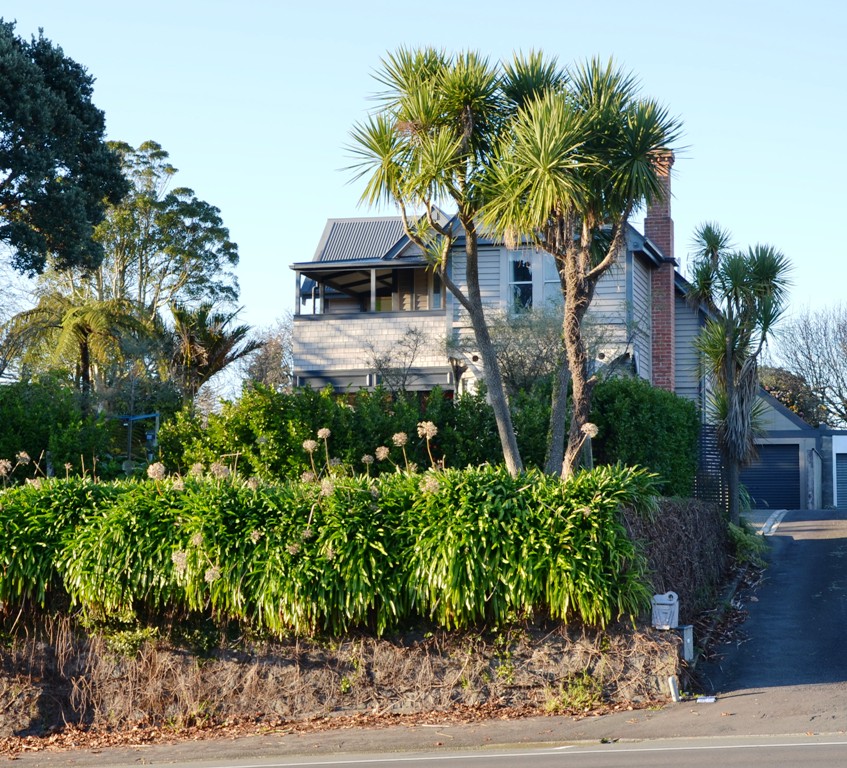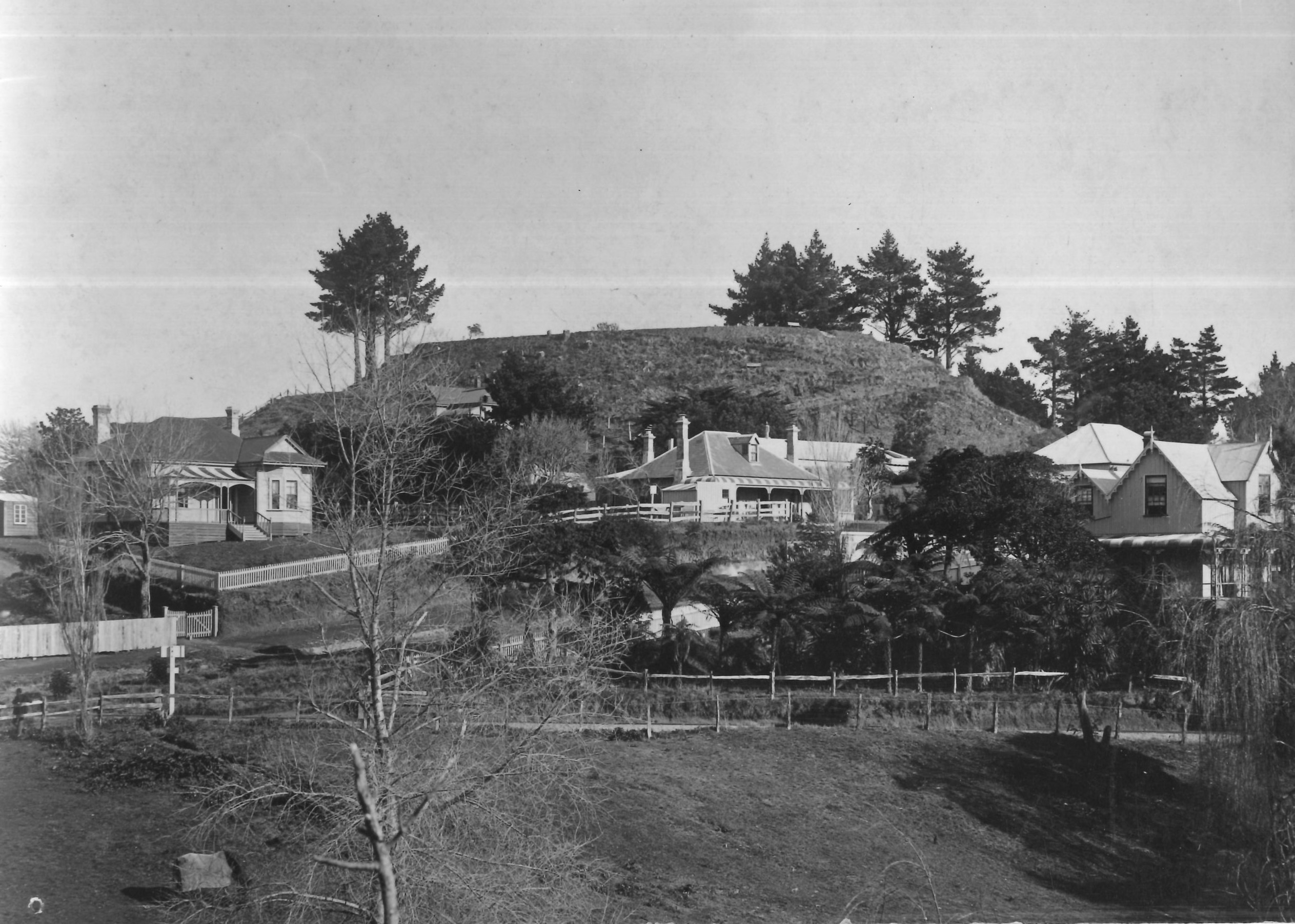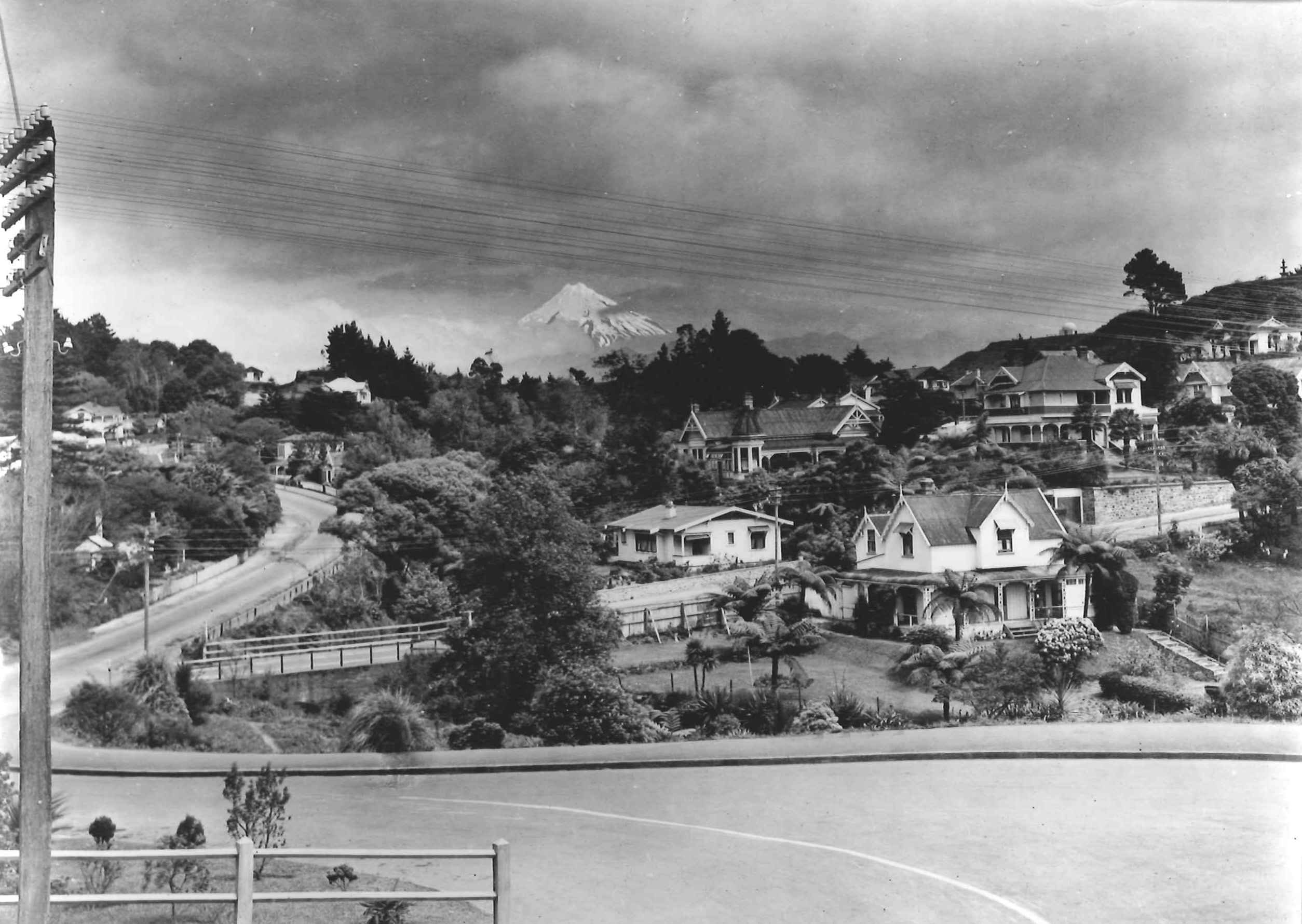





This two-storey house in Vivian Street featured in the 1995 NPDC Heritage Inventory compiled by conservation architect, Chris Cochran.
He described it as, "a good example of a late Victorian villa, with an authentic exterior form". This, combined with its prominent site, overlooking the city, lent it special significance.
The house was built in 1899-1900 and was designed by noted New Plymouth architect Frank Messenger as his private residence. Messenger first appears as living in this area in the 1900 edition of Stone's Street Directory, so construction is likely to have commenced soon after Messenger purchased the section in mid-1899. However, it may not have been completed until later in 1900, with no house mentioned as being present in the 1900-01 NPBC rates book.
Prior to the construction of this house the section was owned by well-known Taranaki surveyor, Octavius Carrington. In the early hours of 19 October 1868 New Plymouth was hit by a large earthquake which caused significant damage. Carrington's house was one of those damaged by the quake.
Octavius Carrington sold the section to F. W. Richmond in August 1898, who on-sold the section to architect Frank J. Messenger in August 1899. Messenger took out a number of mortgages on the section between 1899 and December 1903, when he sold the property to Annie Richmond, and moved to his new villa, in a similar style, at 219 Gill Street.
In February 1905 Annie Richmond placed an advertisement in the Taranaki Herald listing her home "known as 'Daddy Darwin's Dovecotte'" for sale - the name is probably in reference to the children's book 'Daddy Darwin's Dovecot', written by Juliana Horatia Ewing in 1884. It is unclear whether the 'e' in Dovecote is intentional or a misprint, but regardless the name didn't appear to stick, as no further references could be found referring to the house by this name. Annie Richmond sold the property in 1906 to Thomas Kelsey, who owned the home until his death in 1908.
Outside the home is a large retaining wall constructed from Taranaki andesite, probably constructed around the same time as the home, although possibly earlier.
Related item:
Town Section 735, Taranaki Land Deeds Index I3 pages 335 & 336. (Archives New Zealand)
Please do not reproduce these images without permission from Puke Ariki.
Contact us for more information or you can order images online here.